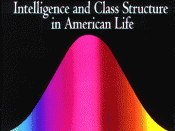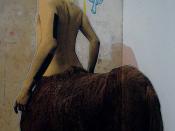"Intelligenceâ¦must be depictable as a single number, capable of ranking people in linear order, genetically based, and effectively immutable" (Gould, 1996, p. 368). These are the four premises, asserted by Richard Herrnstein and Charles Murray, which supposedly validate the accuracy of IQ scores. Herrnstein and Murray published a book in 1994 titled The Bell Curve. In this book they suggest that Social Darwinism should be a guiding philosophy in our society, and that innate cognitive stratification by social class includes racial differences in IQ. Since the publication of The Bell Curve, Bower, Gorey, Gould, Hofer, Kaus, Miller, Pesta, and Poznanski, among many others have critiqued the books assumptions. They have found that the central argument of the Bell curve fails because most of the general claims made and most of the premises are false (Gould, p. 368). Evidence demonstrates that IQ scores do not always determine intelligence. The first claim of The Bell Curve reiterates the efficacy of Social Darwinism.
Social Darwinism is an evolutionary argument about the biological basis of human differences. This refers to class stratification: poor underclass societies consist of genetically inferior people who will never be able to climb the socioeconomic ladder (Gould, 1994). Herrnstein and Murray examine how variables such as income, poverty, crime, and illegitimacy are affected by intelligence. Their major finding is that intelligence and socioeconomic class are influential for many of these variables. For instance, whites in the bottom 5 percent of intellectual ability are 15 times more likely to be in poverty than those in the top 5 percent (Gould, 1994). Herrnstein and Murray suggest that this is because upper class people are more intelligent. Their notion is supported by David M. Buss, a psychologist at the University of Michigan at Ann Arbor. He believes that it is the tendency of...


